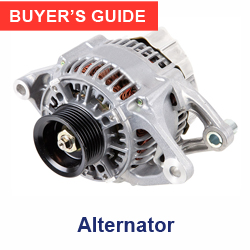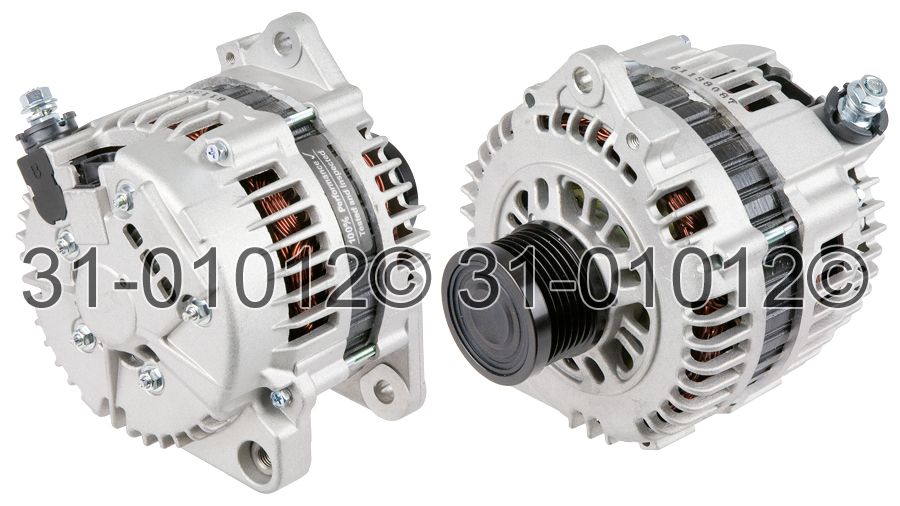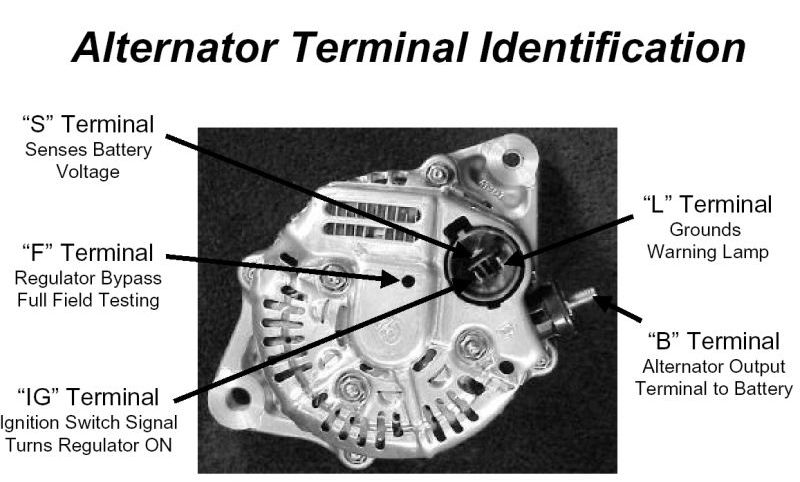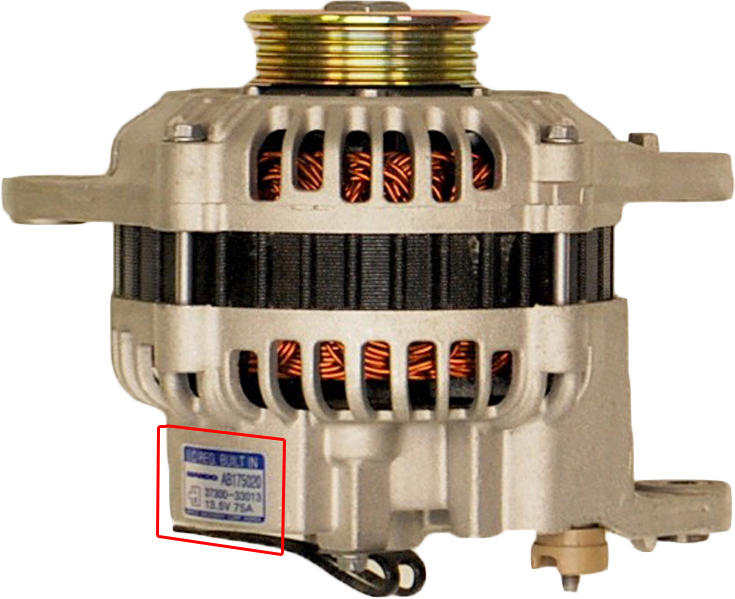How To Buy an Alternator

An alternator, one of the critical components of your vehicle, can leave you stranded on the roads, if it fails completely. The alternator usually fails in stages and it can be detected by a few symptoms. Maintaining the alternator to work up to its standard is highly necessary so that it can supply the required power. This buyer's guide explains the alternator's function and significance, and makes it easy to get a perfect fit at Buy Auto Parts.
Function of an Alternator
The alternator converts the mechanical energy of the engine into the electrical energy required to power the automobile. It is powered by the crankshaft which is driven by the engine. The alternator is located in the front of the engine. It generates an electric voltage between 13.5 and 14.8 volts. Most of the vehicle's electrical components take their necessary power from the alternator. The alternator also recharges the automobile's battery. A voltage regulator is included between the battery and the alternator to prevent the former from getting overcharged. The regulator shuts off once the alternator voltage goes beyond a certain level. Newer vehicles have the regulator and the alternator as a single unit, whereas in older vehicles the parts are available separately.

 |
Understanding the Various Terminals on the Alternator |
The different terminals on the back on the alternator are each meant for a specific purpose explained below: S terminal - This terminal senses the battery voltage. IG terminal - It switches on the voltage regulator. L terminal - This terminal closes the circuit to the charging system warning lamp. B terminal - This is the alternator's output terminal. It is connected to the battery. F terminal - This terminal is the full-field bypass for the regulator. (For testing purposes only.) |
 |
How can I find out that my alternator is defective? After years of service, due to the age of the vehicle, the alternator tends to wear out. One of the indicators of a faulty alternator would be the 'ALT' or 'GEN' light on your vehicle's dashboard. In addition, there are a few symptoms of a faulty alternator. The following are some of the common symptoms of a malfunctioning alternator: Dim Lights: A bad alternator will disturb the electric flow to the various parts of the automobile. The components powered by the alternator may either receive too less or too high voltage. One obvious symptom is the dimming or brightening of the head lights, often due to broken or loose connections in the alternator. A bad alternator will also affect the working of the dashboard lights and power windows/seats. Unusual Sounds: An accessory belt or serpentine belt connects the crankshaft and the alternator. A growling or whining noise is emitted if this belt loses its tension, or if the bearings or bushings are worn out. Bearing failure will also produce a squealing or howling noise. Dead Battery: If your battery discharges more frequently than normal, it is a symptom of a malfunctioning alternator. There may also be some problems in the electric connections that are draining the voltage out. In extreme cases, the alternator will fail to recharge the battery completely. (However, the battery can go bad even while the alternator is functioning properly. It is necessary to inspect and check which part is the actual culprit to fix the problem.) Engine Problems: A defective alternator induces engine problems such as rough idling, misfiring, poor acceleration and stalling. In addition, the engine may have a hard time starting, especially in cold weather conditions. |
Finding Your Alternator's OEM Part Number |
If for any reason you cannot find your alternator by entering your vehicle's year, make and model, you can find the best alternator for your vehicle by its Original Equipment Manufacturer (OEM) number. The OEM part number can be found directly on the part itself. You can also call a dealership with your VIN, and they will provide you with the OEM part number. You can give one of our car specialists a call at 1-888-907-7225 for further assistance in purchasing your alternator. |
 |
Check out our shipping and warranty policies. |
Frequently Asked Questions |
Can a high-output alternator be used in standard vehicles? |
Usually, high-output alternators are used in high-performance automobiles but they can also be fit into mainstream vehicles. Find the benefits of using a high-output alternator in this link: High Output Alternator |
What could be the simple way to find out whether my alternator is faulty? |
Start the car (do jump starting if required) and check the output voltage of the alternator with a digital multi-meter or any other similar device that measures DC voltage. If the device reads 12 volts or less, the alternator has gone bad. If the voltage reading is within the optimal range (13.5 volts and 14.8 volts), the alternator is perfectly fine; the problem is somewhere else. |
Is self-installation possible with alternators? |
The installation process can be difficult or manageable depending on your automotive experience in repairing. If you are a regular DIYer, the process can be pretty manageable. The installation process also varies for different automobiles. You can find the step-by-step installation guide of an alternator here: How To Remove and Replace an Alternator? |
View more FAQs and their answers in this link: How Much Does an Alternator Cost?


